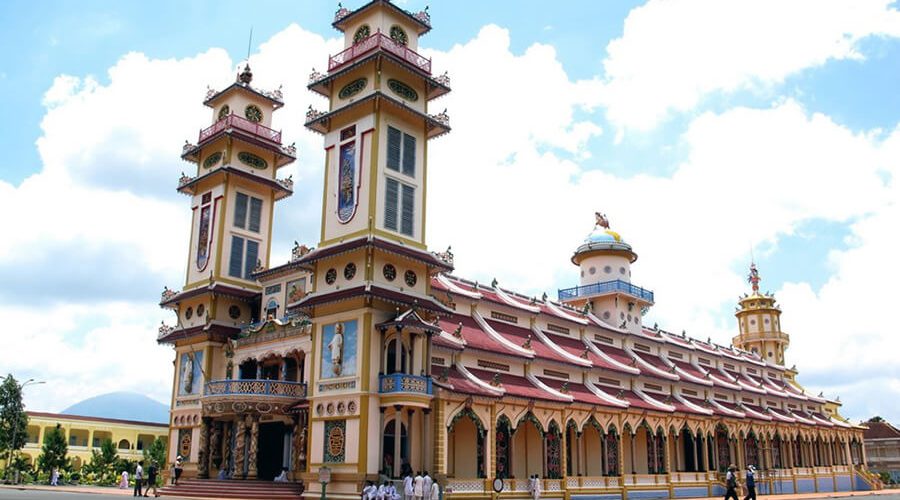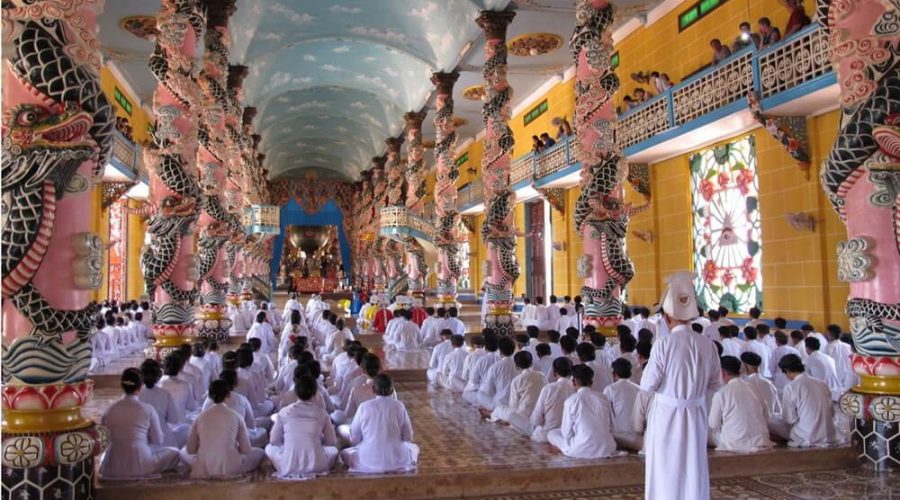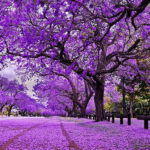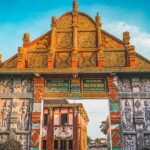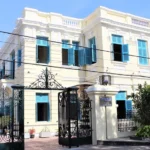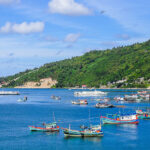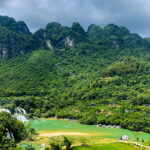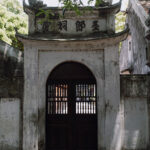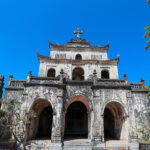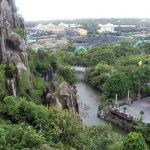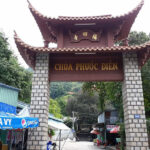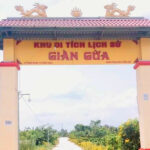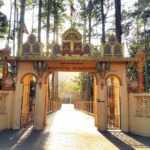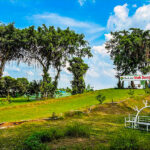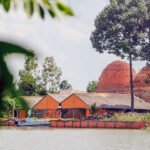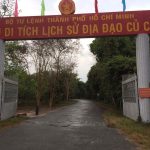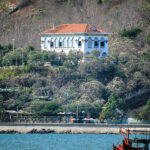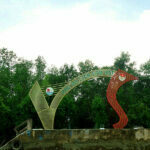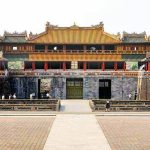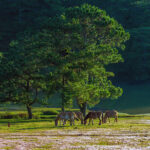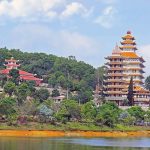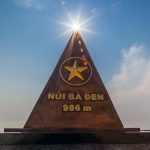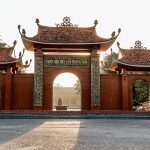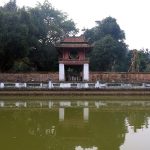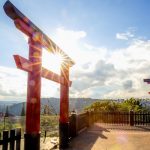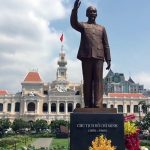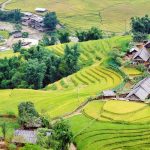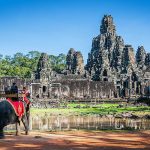One of the famous tourist destinations in Tay Ninh is Cao Dai Holy See, the worshiping place of a religion originating in the country with its own unique architecture located on a 1.2 km wide campus.
Table of Contents
Introduction of Cao Dai Holy See
Cao Dai Holy See is located in Long Thanh Bac commune, Hoa Thanh district, about 4km southeast of Tay Ninh city center and about 100km northwest of Ho Chi Minh City. This place is known as a typical work of Cao Dai religion in Tay Ninh. According to our research about Tay Ninh Holy See, the special highlight of this place’s architecture was built entirely of bamboo-reinforced cement. The local also said that the Tay Ninh Holy See was built on the sacred land – a place considered a holy place for Saints, Immortals, Buddhas as well as God who chose it as a Holy See to come and dwell.

Although it was built around mid-1933, it was not until 22 years later (1955) that the Tay Ninh Holy See was completed due to interruptions due to war during construction. According to the original design, the Holy See is 135m long, 27m wide, and the foundation is 1.8m high.

However, when the construction of the Holy See first started, the Church encountered financial difficulties, so during construction it was reduced in size. The actual size is only 97.5m long and 22m wide.
When should you visit Cao Dai Holy See?
Unlike outdoor tourist destinations in Tay Ninh where you need to choose the right time to avoid rainy days, you can visit Cao Dai Holy See at any time of the year. However, according to many people’s experience of exploring Cao Dai Holy See, you should go on the 9th day of the first lunar month or the full moon day of the 8th lunar month when the two biggest Tay Ninh festivals of the year take place.

Dieu Tri Cung Festival in Cao Dai Holy Land
On these days, the number of pilgrims and visitors to Cao Dai Holy See becomes extremely crowded and bustling.

For normal day, the most ideal time is around 12 o’clock because this is the time for the grand altar worship ceremony at the Holy See.

When attending festivals here, you will learn more about the spiritual beauty and unique culture of Cao Dai religion.
Cao Dai Holy Land Highlights
The first impression on visitors coming here is the “Thien Nhan”(Divine Eyes – representing God) believers that God witnesses everything, everywhere, constantly. At the temple, there are in total 50 Divine Eyes of five different shapes; each carrying a different meaning.

The main area of Thien Nhan shrine is located on the realm of wisdom with 3,027 stars (representing 3,072 for stars). Visitors are not allowed to go in the middle of sightseeing, take pictures, but only look at the main hall from the two sides.

The temple was built by Caodaism followers under the direct construction of the head spirit medium or Ho Phap (Defender of the Dharma). There was no detailed project drawn on paper, nor the participation of an architect, construction engineer or machine to help.

Entrance of Cao Dai Holy Land
Cao Dai is a new religion, incorporating many elements from major religions, including Buddhism, Taoism, Confucianism, Christianity, Geniism.

This religion even worshiped a number of modern politicians and writers, who believed to guide humanity into the way of the Third Amnesty. They are “Three Saints” including Sun Yat-Sen (the Chinese statesman and revolutionary leader), Victor Hugo (French poet and author), and Nguyen Binh Khiem (Vietnamese administrator, educator, poet, sage).

The Three Saints: Sun Yat-Sen; Victor Hugo, and Nguyen Binh Khiem
The main hall has 18 pillars divided into 2 sides, decorated with dragons, intricately carved. These pillars fit into the platform, divide the hall into nine sections, representing the nine steps to heaven, with each level marked by a pair of columns. Worshippers achieve each new level depending on their years as Cao Dai adherents.

At the far end of the sanctuary, seven chairs in front of the Executive Body is reserved for the Pope; the next three chairs are for the three Censor Cardinals responsible for the religion’s law books. The remaining chairs are for the leaders of the three branches of Caodaism, represented by the colors yellow, blue, and red.

Watching worshippers pray is one of the major highlights when visiting the temple as they dress “ao dai” in many colors: white for lay followers, yellow, blue, or red for priests whilst bishops have the Divine Eye embroidered on their headpieces. During praying time, men are seated on the right and women on the left. There is four worship with chanting each day: 6:00 am, 12:00 pm, 18:00 pm, and mid-night. But The main ceremony time here is 12 noon.

The Holy See also has many symbols that contain special meanings, like prophecies in oracles waiting for answers.

In the brick yard front of the Cao Dai Holy See has a Bodhi tree, donated by Venerable Thera Narada – Deputy Supreme Patriarch of Sri Lankan Buddhism, extracted from the Bodhi tree at Mahabodhi Temple (Bodh Gaya), India for Cao Dai Holy See in 1953.

Bodhi tree in Cao Dai Holy See
Some important notes when visiting Cao Dai Holy see in Tay Ninh:
- Silence is requested during worship time taking place.
- There are two sides of the door to enter the temple; men enter on the right side and women go to the left door.
- Don’t forget to remove your hats, coats, and shoes before stepping inside the temple.
- There is no standard rule of dressing but try to wear formal outfits consistent with the religious place (such as trousers or skirts covering the knees).
- Visitors are permitted to watch from the galleries and may take photographs but DO NOT take pictures of people with the “Thien Nhan”. Also please ask for permission from the manager before taking a panoramic view of the temple.
Nowadays, the Cao Dai Temple in Tay Ninh and Cu Chi tunnels can be visited in 1 day. Vietdreamtravel is also offering a daily tour or private tour to explore these areas. Therefore, do not hesitate to contact us about your booking!
